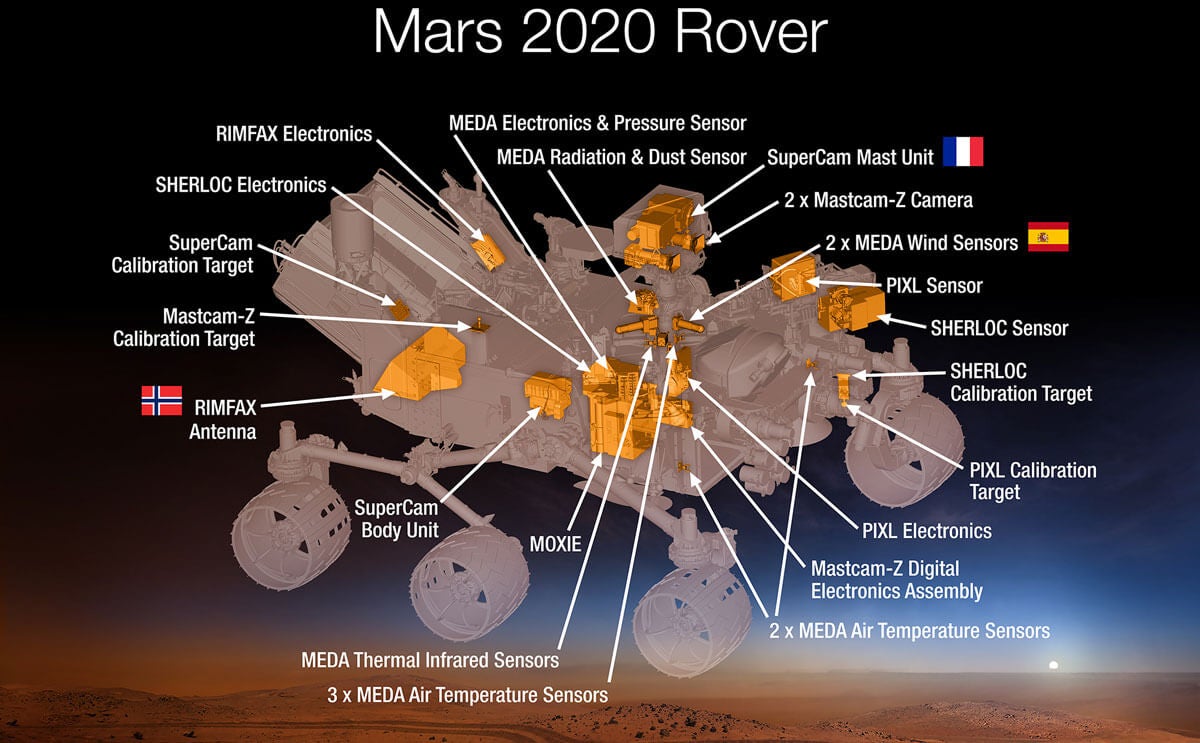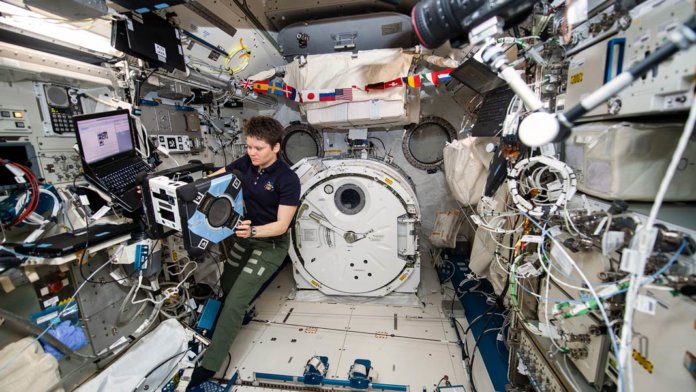Buck Rogers had Twiki. Luke Skywalker palled around with C-3PO and R2-D2. And astronauts aboard the International Space Station (ISS) now have their own robotic companions in space—Astrobee.
A pair of the cube-shaped robots were launched to the ISS during an April re-supply mission and are currently being commissioned for use on the space station. The free-flying space robots, dubbed Bumble and Honey, are the latest generation of robotic machines to join the human crew on the ISS.
Exploration of the solar system and beyond will require autonomous machines that can assist humans with numerous tasks—or go where we cannot. NASA has said repeatedly that robots will be instrumental in future space missions to the moon, Mars, and even to the icy moon Europa.
The Astrobee robots will specifically test robotic capabilities in zero gravity, replacing the SPHERES (Synchronized Position Hold, Engage, Reorient, Experimental Satellite) robots that have been on the ISS for more than a decade to test various technologies ranging from communications to navigation.
The 18-sided robots, each about the size of a volleyball or an oversized Dungeons and Dragons die, use CO2-based cold-gas thrusters for movement and a series of ultrasonic beacons for orientation. The Astrobee robots, on the other hand, can propel themselves autonomously around the interior of the ISS using electric fans and six cameras.
The modular design of the Astrobee robots means they are highly plug-and-play, capable of being reconfigured with different hardware modules. The robots’ software is also open-source, encouraging scientists and programmers to develop and test new algorithms and features.
And, yes, the Astrobee robots will be busy as bees once they are fully commissioned this fall, with experiments planned to begin next year. Scientists hope to learn more about how robots can assist space crews and perform caretaking duties on spacecraft.
Robots Working Together
The Astrobee robots are expected to be joined by a familiar “face” on the ISS later this year—the humanoid robot Robonaut.
Robonaut, also known as R2, was the first US-built robot on the ISS. It joined the crew back in 2011 without legs, which were added in 2014. However, the installation never entirely worked, as R2 experienced power failures that eventually led to its return to Earth last year to fix the problem. If all goes as planned, the space station’s first humanoid robot will return to the ISS to lend a hand to the astronauts and the new robotic arrivals.
In particular, NASA is interested in how the two different robotic platforms can complement each other, with an eye toward outfitting the agency’s proposed lunar orbital space station with various robots that can supplement a human crew.
“We don’t have definite plans for what would happen on the Gateway yet, but there’s a general recognition that intra-vehicular robots are important for space stations,” Astrobee technical lead Trey Smith in the NASA Intelligent Robotics Group told IEEE Spectrum. “And so, it would not be surprising to see a mobile manipulator like Robonaut, and a free flyer like Astrobee, on the Gateway.”
While the focus on R2 has been to test its capabilities in zero gravity and to use it for mundane or dangerous tasks in space, the technology enabling the humanoid robot has proven to be equally useful on Earth.
For example, R2 has amazing dexterity for a robot, with sensors, actuators, and tendons comparable to the nerves, muscles, and tendons in a human hand. Based on that design, engineers are working on a robotic glove that can help factory workers, for instance, do their jobs better while reducing the risk of repetitive injuries. R2 has also inspired development of a robotic exoskeleton for both astronauts in space and paraplegics on Earth.
Working Hard on Soft Robotics
While innovative and technologically sophisticated, Astrobee and Robonaut are typical robots in that neither one would do well in a limbo contest. In other words, most robots are limited in their flexibility and agility based on current hardware and materials.
A subfield of robotics known as soft robotics involves developing robots with highly pliant materials that mimic biological organisms in how they move. Scientists at NASA’s Langley Research Center are investigating how soft robots could help with future space exploration.
Specifically, the researchers are looking at a series of properties to understand how actuators—components responsible for moving a robotic part, such as Robonaut’s hand—can be built and used in space.
The team first 3D prints a mold and then pours a flexible material like silicone into the mold. Air bladders or chambers in the actuator expand and compress using just air.
Some of the first applications of soft robotics sound more tool-like than R2-D2-like. For example, two soft robots could connect to produce a temporary shelter for astronauts on the moon or serve as an impromptu wind shield during one of Mars’ infamous dust storms.
The idea is to use soft robots in situations that are “dangerous, dirty, or dull,” according to Jack Fitzpatrick, a NASA intern working on the soft robotics project at Langley.
Working on Mars
Of course, space robots aren’t only designed to assist humans. In many instances, they are the only option to explore even relatively close celestial bodies like Mars. Four American-made robotic rovers have been used to investigate the fourth planet from the sun since 1997.
Opportunity is perhaps the most famous, covering about 25 miles of terrain across Mars over 15 years. A dust storm knocked it out of commission last year, with NASA officially ending the mission in February.
However, the biggest and baddest of the Mars rovers, Curiosity, is still crawling across the Martian surface, sending back valuable data since 2012. The car-size robot carries 17 cameras, a laser to vaporize rocks for study, and a drill to collect samples. It is on the hunt for signs of biological life.
The next year or two could see a virtual traffic jam of robots to Mars. NASA’s Mars 2020 Rover is next in line to visit the Red Planet, sporting scientific gadgets like an X-ray fluorescence spectrometer for chemical analyses and ground-penetrating radar to see below the Martian surface.

Meanwhile, the Europeans have teamed with the Russians on a rover called Rosalind Franklin, named after a famed British chemist, that will drill down into the Martian ground for evidence of past or present life as soon as 2021.
The Chinese are also preparing to begin searching for life on Mars using robots as soon as next year, as part of the country’s Mars Global Remote Sensing Orbiter and Small Rover program. The mission is scheduled to be the first in a series of launches that would culminate with bringing samples back from Mars to Earth.
Perhaps there is no more famous utterance in the universe of science fiction as “to boldly go where no one has gone before.” However, the fact is that human exploration of the solar system and beyond will only be possible with robots of different sizes, shapes, and sophistication.
Image Credit: NASA.



